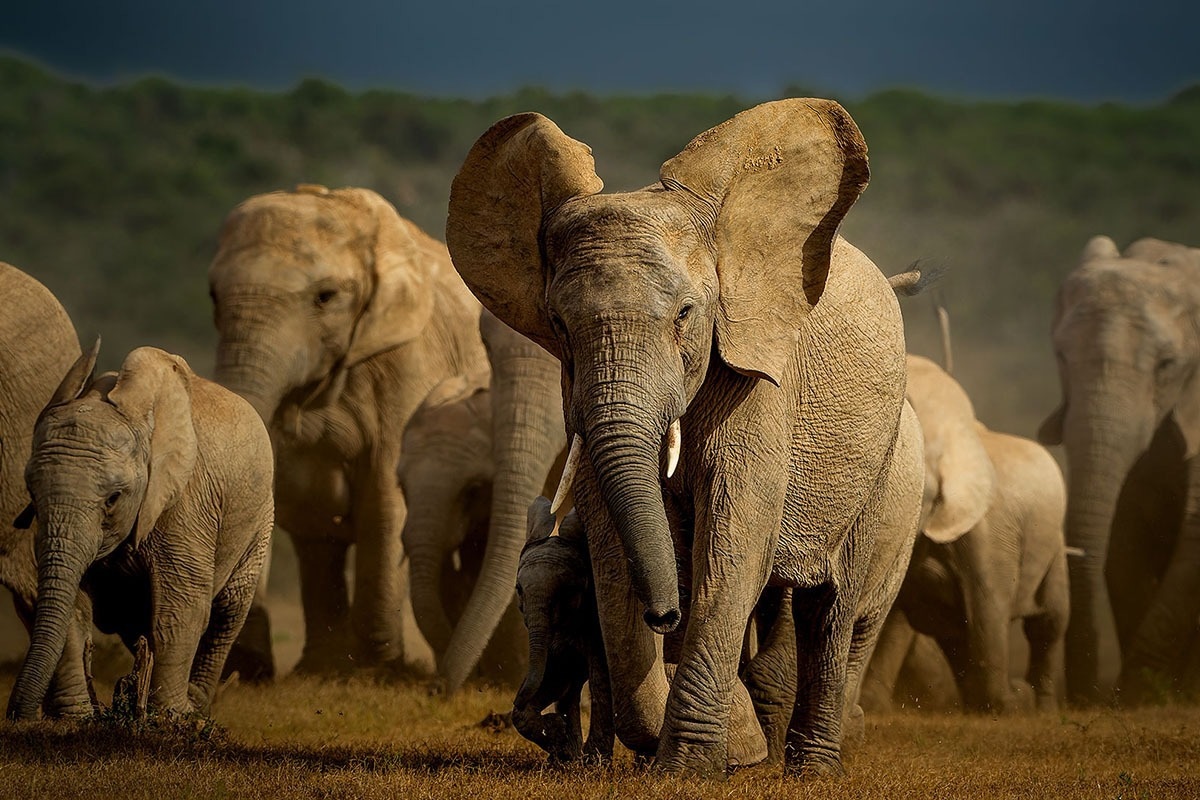With the aid of a novel DNA-collection technique, researchers can now collect genetic data from elephants without endangering the animals or endangering themselves.
 A new approach to obtaining DNA from elephant dung is faster, cheaper, and more comprehensive than previous methods, researchers report. Pictured: African savanna elephants in Addo Elephant National Park in South Africa. Image Credit: Rudi van Aarde
A new approach to obtaining DNA from elephant dung is faster, cheaper, and more comprehensive than previous methods, researchers report. Pictured: African savanna elephants in Addo Elephant National Park in South Africa. Image Credit: Rudi van Aarde
The protocol, which was tested on elephant dung, produced enough DNA to sequence the entire genomes of the elephants as well as those of the associated microbes, plants, parasites, and other organisms, all for a fraction of the price of the methods currently used.
The journal Frontiers in Genetics publishes the researchers’ findings.
We combined existing methodologies in such a way that we are now able to use noninvasive samples to generate genome-scale data. This allows us to assess wildlife populations without having to dart, capture or immobilize animals.”
Alida de Flamingh, Postdoctoral Researcher, University of Illinois
Together with Alfred Roca, Professor of Animal Sciences at the University of Iowa, de Flamingh led the project.
Getting DNA from elephant dung is not a novel idea, according to Roca.
Elephant fecal samples have been used for decades to study the genetics of elephants. But this relies on very cumbersome methods, often involving chemicals that in some cases may be dangerous. The collections are bulky, they are hard to ship and they have to be refrigerated, making the whole process very costly.”
Alfred Roca, Professor, Animal Sciences, University of Illinois
Using postcard-sized data collection cards that have been treated to prevent the samples from deteriorating was a relatively cheap alternative that de Flamingh tested. Samples can be kept for months without refrigeration after being smeared on the cards, according to earlier research.
The research was motivated by de Flamingh’s work with Ripan Malhi, an anthropology professor at the University of Illinois and study co-author whose lab specializes in ancient DNA.
de Flamingh added, “Ancient DNA can be problematic because samples are degraded and may yield very low levels of target species DNA. I thought, this sounds like an excellent opportunity to test whether the same methodologies can be applied to noninvasive samples to generate the same type of data.”
Due to lower concentrations of elephant DNA than those found in blood samples, obtaining genomic information from dung can be equally difficult.
In an effort to gauge how long after defecation the dung would still be able to produce useful genomic information, the team first collected samples from zoo elephants.
The team was granted access to the African savanna elephants at the Dallas Zoological Gardens and the Jacksonville Zoo and Gardens in Florida. The samples were collected immediately following defecation as well as 24, 48, and 72 hours later.
According to their tests, even three-day-old dung produced enough DNA for elephant genomic research.
The scientists then put their method to the test using samples taken from wild African savanna elephants.
Rudi van Aarde, a professor emeritus of zoology and entomology at the University of Pretoria in South Africa and study collaborator and co-author, and his colleagues used the cards to locate a variety of geographically and ecologically diverse wild areas throughout South Africa.
The team discovered a gold mine of data in the dung by using genomic databases to process the sequence data obtained from the cards.
Roca stated, “I was surprised. I thought we might get some elephant DNA from the cards, but I was thinking on the order of 2%. However, on average, more than 12% of the DNA was attributed to the elephant.”
According to the researchers, this was accomplished without the use of expensive and time-consuming laboratory techniques that only target elephant DNA. Each sample produced a wealth of information about the elephant, the microbes in its gut, its environment, and its diet.
Even the DNA of butterflies and other arthropods that interact with the dung after it has been deposited was found by the researchers.
“It is really beneficial to get an idea of everything that is in there because now you can start asking questions, not only about elephant genomes but also about things like their health, their diet, and whether there are pathogens or parasites present,” de Flamingh added.
The outcomes for the elephant genomes are comparable to those attained from blood samples, according to Roca.
He further stated, “You can explore the connectivity of different elephant populations, the level of genetic diversity, the level of inbreeding and relatedness among elephants. And I would say there are lots of reasons you don’t want to have to collect blood samples from wild elephants.”
de Flamingh further stated, “It is possible to do what you could do with blood, but it goes beyond that. You now can do analyses that you couldn’t do before with blood DNA, which only provides information about the elephant’s genome.”
Source:
Journal reference:
de Flamingh, A., et al. (2022). Combining methods for non-invasive fecal DNA enables whole genome and metagenomic analyses in wildlife biology. Frontiers in Genetics. doi.org/10.3389/fgene.2022.1021004